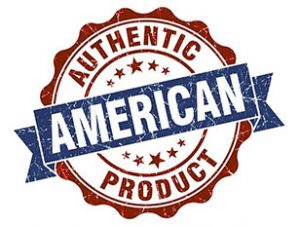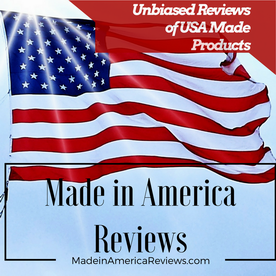
Research conducted over the course of the past year or so has revealed a frustrating statistic: more people are paying much more attention to the price than any labeling indicating that a product is Made in America. For those of us who are trying to revive American manufacturing, this statistic is more infuriating than most. How are we going to be able to get the average person interested and actively engaged in manufacturing?
Part of the problem, of course, is that the average person is too far removed from the process to feel like their individual contribution is actually assisting the American manufacturing industry. After all, they don’t interact on a daily basis with manufacturers. They don’t see their fellow Americans returning to manufacturing jobs. In fact, most Americans cannot tell you three facts about American Manufacturing period.
So how do we fix this?
Changing the face of manufacturing is the first way we’re going to bring the idea of American manufacturing home to people. To do this is going to take a lot of effort on everyone’s parts in order to educate people about what American manufacturing looks like.
- Through targeted campaigns or ads: There are many organizations throughout the United States that are supporters of American manufacturing. They spend quite a bit of time and money getting the word out to their fellow manufacturers and lawmakers about manufacturing problems. If they regulated some of the funds spent on advertising to market to lay people on the modern face of manufacturing, people might be more apt to recognize the faces as their neighbors and friends, rather than strangers.
- Education at the school-age level: We’ve touched upon this need in other articles but technical education in schools needs to become a priority as we move into more technical levels of manufacturing. It seems bizarre that something so fundamental is pushed aside in favor of more band lessons, drama lessons, and the like. Most four-year schools don’t even include a technical education component in their curriculum. One or two classes would not disrupt any pre-college coursework and it may encourage students to pursue avenues in manufacturing that will aid in the recovery of an industry.
- Having representatives from local manufacturers put in public appearances: This one seems like a no-brainer but a lot of people fail to recognize American manufacturers because they aren’t a very visible part of our everyday lives. Manufacturing can be a very isolating business, with majority of work conducted on premise and many hands exchanging and moving from place to place before it gets to the consumer. By sending out representatives to public events in their home towns, they will become a familiar image in public minds.
Why Aren't We Buying American? Click To Tweet
Along with visibility, American manufacturing needs to create a demand for its product. Easier said than done, right? I’m not talking in economic terms. Since the last presidential election, large corporate companies like Toys-R-Us have reported no increase in the demand for American-Made products and that is not great incentive to switch to more American-Made manufacturers. So long as people believe that they are only one voice, they will fail to speak out in any significant way. The circulation of petitions, whether online or in-store, would allow for more companies to see that their customers demands, without it being too difficult on the customer to show their support.
In addition, stores would do well to allow the selection via a click-survey on their website to further demonstrate the desire for American products. At least allowing their customers the option of making their wishes known would allow them to look more patriotic, something that many corporations strive for. In a recent poll, it showed that 3 out of 4 Americans believed; buying USA made merchandise is more patriotic. Furthermore, The BCG survey found that about two-thirds of U.S. shoppers said they were willing to pay a 10% to 60% premium for items ranging from appliances to baby food if they were made domestically.
| If you like what you see and think this post would be of interest to someone, please share |
[apss_share] |
The one thing that we, unfortunately, have very little control over is, of course, price. In tough economic times,  it only makes sense that more people are looking toward the price of products more than branding. Fixing this problem is something that manufacturers have been worrying over since the 1990s when the decline in American manufacturing began its rapid descent. A lot of this can be handled with modifications of treaties via congressional encouragement, but trying to make congress make any impactful decision concerning economic impacts seems to be a difficult task.
it only makes sense that more people are looking toward the price of products more than branding. Fixing this problem is something that manufacturers have been worrying over since the 1990s when the decline in American manufacturing began its rapid descent. A lot of this can be handled with modifications of treaties via congressional encouragement, but trying to make congress make any impactful decision concerning economic impacts seems to be a difficult task.
That being said, it is possible to more closely match competitor pricing through the ever-growing creative manufacturing products as well as increase visibility of the American made labeling system by enabling consumers to simply glance at a product and know it was manufactured right here in the USA. As new innovations and product labelling systems evolve, it is possible to counterbalance higher end-product pricing.
The more American products that find themselves onto retail shelves, the more matters of price and labeling can go by the wayside. It’s a possible but it’s going to take time. Every contribution is pushing us toward a stronger American manufacturing industry. The question remains if those with the power to do so are going to help the American public understand and take action against the industry killers that are currently plaguing the current system.
Do you have a suggestion or comment about our list? Let us know by commenting on our Facebook page.








